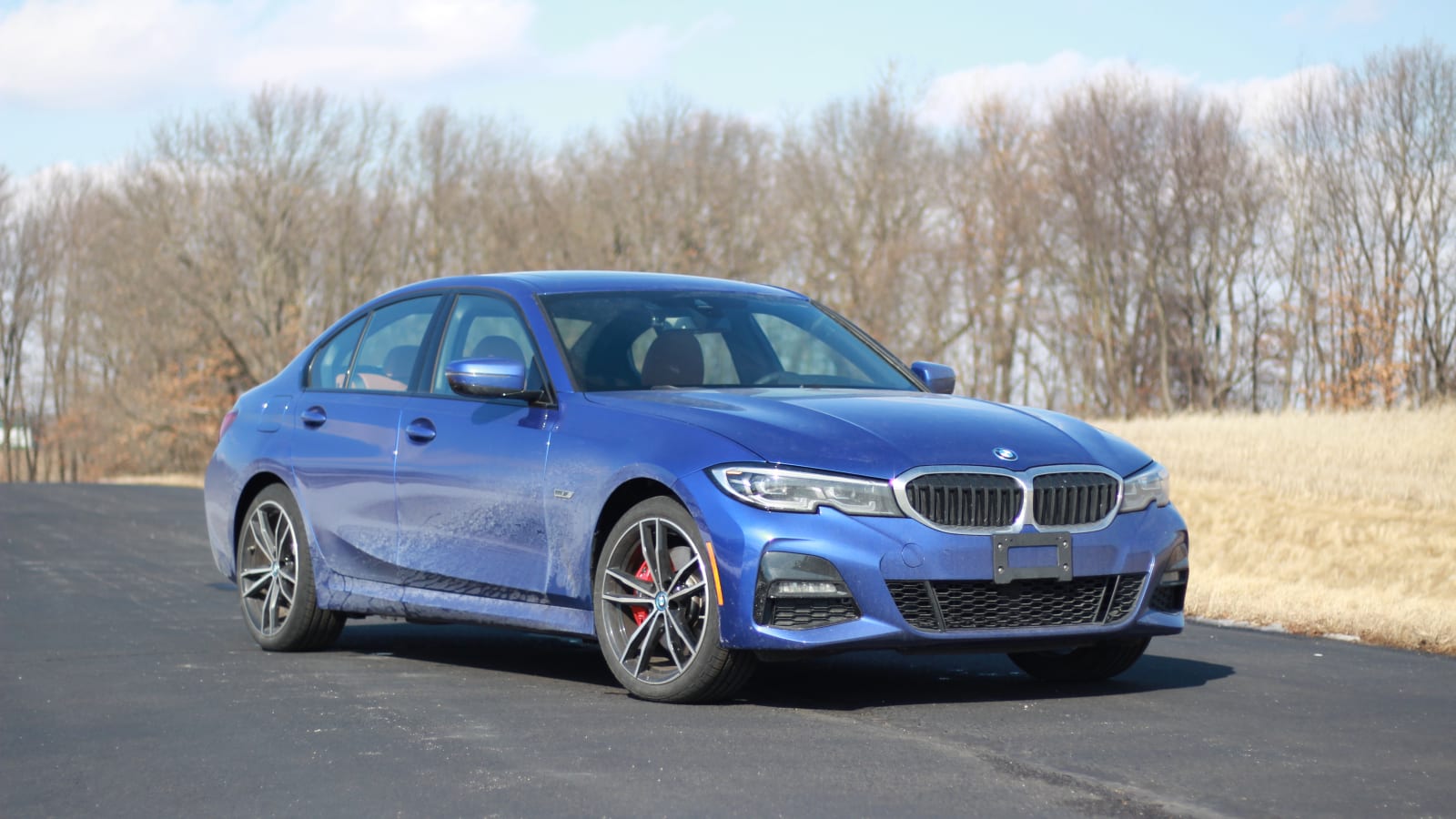All the rage when it comes to driving range these days is typically directed toward electric cars. However, allow us to momentarily direct your attention to the total (gasoline and electric combined) range of our long-term 2022 BMW 330e xDrive plug-in hybrid.
We don’t pay as much attention to the range figure for gasoline-powered cars, because it’s easy, quick and convenient to find a gas station and fill it back up in just 10-15 minutes. That said, the EPA lists a range for every internal combustion car and PHEV on its site, in addition to EVs. Our 330e xDrive is quoted at a total range of 290 miles, assuming you start with a full tank and a 100% charge to the battery. In a vacuum, that might sound fine. But compare that to the gasoline-only 330i xDrive, and it reveals a packaging weak point inherent to some PHEVs.
You see, the 330i xDrive boasts an overall driving range of 437 miles. That is in part due to the gasoline-only car returning better combined mpg — it beats the 330e by 3 mpg combined when the 330e is exclusively running on gas power — but it’s mostly due to the 330i xDrive having a significantly larger fuel tank. How much bigger? Try 15.6 gallons versus our 330e’s 10.6 gallons.
Put another way, the 330i has a 47% bigger fuel tank than the 330e. Why is this? The 330e’s 12.0 kWh lithium-ion battery pack has to go somewhere, and BMW finds room for it under the rear seats. This cuts into space that could otherwise be used for the gas tank and the cargo area. The result is less overall driving range for 330e owners than those who opt for the 330i.
Of course, there’s the very important question of: Does any of this matter? If your use case for the 330e is to drive it around town on short trips, then no, less overall driving range won’t be too much of a concern. Being a PHEV, that’s the use case that would make the most sense, as short trips would have you maximizing the number of miles driven purely on electricity. It’s also the use case that BMW likely had in mind when engineering the 330e for specific buyers, and probably contributed to engineers ultimately signing off on the smaller and compromised fuel tank. The thought process being, even if you do use the gasoline engine every now and then, you’d still be fueling up less often than someone with a 330i who doesn’t wake up to 20 miles of electric range waiting for them every day.
The reason we notice the 330e’s limited range, and why we’re specifically calling it out, is because we end up putting our long-term cars through virtually every use case. So yes, we’ve already used it for racking up long highway miles, and it requires more frequent fuel stops than most cars when doing so. Remember, that range falls to just 270 miles if you’ve already depleted the battery. It’s no Ford GT, but the tradeoff is evident.
If you’re really going to be piling the miles on frequently and in long duration increments, it’s something to keep in mind when deciding between a 330e or a 330i. The final point in the 330i xDrive’s favor for long-haul trips is fuel economy, as once you deplete the battery of the 330e, the 330i — rated for 34 mpg on the highway — becomes the efficiency winner. It’s not a runaway victory, as our 330e highway jaunts have seen real-world fuel economy creep into the low 30s, but it’s nonetheless worth noting.
Related video:
Source: www.autoblog.com

